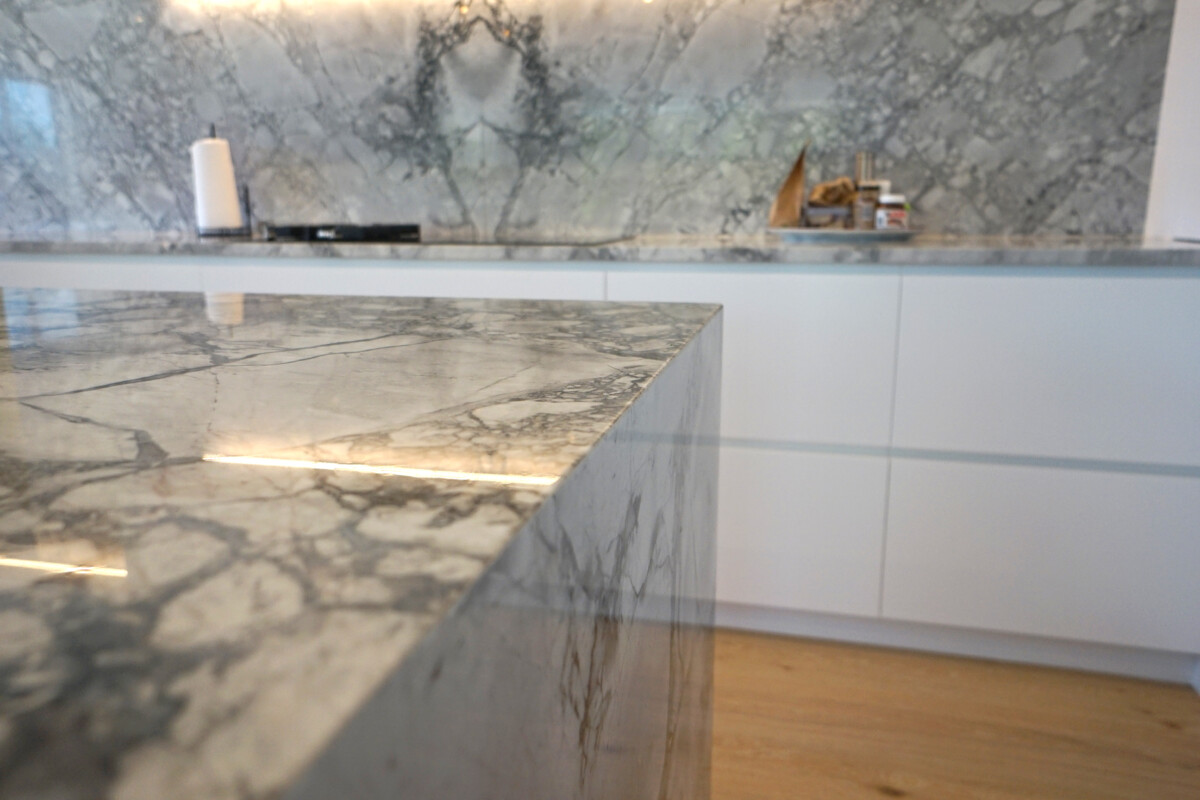Important Tips for Maintaining Your Cooking Area Benchtops for Resilient Appeal
Maintaining the appeal and long life of your kitchen benchtops calls for a thoughtful technique to care and cleansing. With various materials and surfaces readily available, the best methods may vary-- checking out these subtleties could reveal unforeseen understandings for your kitchen care routine.
Regular Cleaning Practices
Maintaining a beautiful kitchen benchtop begins with executing normal cleansing methods. Establishing a constant cleaning routine is important to stop the accumulation of dirt, grime, and bacteria, ensuring both health and aesthetic appeal. A daily cleansing routine must include wiping down surface areas with a soft towel and warm, soapy water to remove food particles and spills. This simple technique not just maintains the benchtop looking fresh but additionally lowers the risk of contamination.
Along with everyday maintenance, an once a week deep clean is advisable. Throughout this process, take into consideration using an extra thorough option, such as a gentle multi-surface cleaner, to take on any persistent discolorations or residues. For materials like granite or quartz, it is essential to adhere to maker recommendations for cleansing products to maintain their stability.
Pay unique attention to high-traffic locations where spills are most likely to happen, and don't fail to remember to cleanse the edges and corners where dust can build up. Regular cleaning not only boosts the durability of your cooking area benchtop but also ensures a risk-free and welcoming cooking environment. By establishing these behaviors, property owners can keep the appeal and functionality of their kitchen area surface areas with time.
Avoiding Severe Chemicals
When it involves cleaning up cooking area benchtops, choosing the best cleaning items is extremely important (Kitchen Benchtops). The longevity and visual charm of your benchtops can be considerably endangered by the usage of harsh chemicals. Several conventional cleansing representatives have unpleasant substances that can scratch and dull surface areas, leading to unsightly marks and a reduction in their overall lifespan
Furthermore, extreme chemicals can respond adversely with specific products, such as all-natural rocks or engineered surface areas, potentially resulting in discoloration or degradation. For instance, acidic cleaners can erode the coating of granite or marble, while bleach can damage artificial surface areas. It is important to opt for pH-balanced, mild cleaning solutions that properly get rid of dirt and stains without taking the chance of injury to your benchtops.
Additionally, many environmentally friendly products are readily available on the market, which not only offer risk-free cleaning options yet likewise contribute to a much healthier kitchen area environment. If you prefer a do it yourself technique, a mix of cozy water and moderate soap can be highly reliable (Kitchen Benchtops). By staying clear of rough chemicals, you can preserve the beauty and stability of your kitchen benchtops for several years to find
Utilizing Cutting Boards
Utilizing cutting boards is essential for protecting your cooking area benchtops from the ground up and damage while preparing food. These boards function as a barrier in between your blades and the surface of your benchtops, considerably reducing the danger of undesirable marks and wear. It is suggested to use a cutting board made from products such as wood, bamboo, or plastic, as each deals unique benefits.
Wood cutting boards are known for their longevity and knife-friendly residential or commercial properties; they can help maintain your knives sharp. Bamboo boards are an eco-friendly option that is light-weight and immune to blade scars. Plastic cutting boards, on the other hand, are very easy to tidy and typically dish washer safe, making them a functional alternative for everyday use.

Sealing and Shielding Surfaces
Securing your kitchen benchtops prolongs past using cutting boards; securing the surface areas plays a critical function in safeguarding against discolorations, moisture, and wear. The right sealer can improve the longevity of materials, such as granite, quartz, and wood, guaranteeing they keep their aesthetic appeal gradually.

Application of the sealant should be carried out in a tidy, dry setting, following the supplier's directions for ideal outcomes. Typically, this entails cleaning the surface area thoroughly, applying the sealer evenly, and enabling it to heal as suggested. Normal maintenance, including resealing every 1-3 years depending on see here now usage and product, will certainly strengthen protection and extend the life of your benchtops, guaranteeing they remain a sensational focal point in your kitchen area.
Attending To Spots Promptly
Spots on cooking area benchtops can quickly end up being a substantial concern if not resolved promptly. The longer a stain remains, the harder it becomes to remove, potentially resulting in long-term staining and damages to the surface area. Therefore, it is critical to tackle spills and stains as quickly as they take place.
Various products need details approaches to stain removal. For example, non-porous surface areas like quartz can generally be cleansed with light soap and water, while porous materials, such as natural stone, might require customized cleansers to protect against liquid infiltration. Always refer to the producer's guidelines for the very best cleansing methods.

Regular upkeep, consisting of sealing porous surface areas, can significantly lower the danger of discoloration. By quickly attending to spills and recognizing the specific needs of your benchtop material, you can protect the visual charm and pop over here performance of your cooking area surface areas for several years ahead.
Verdict
In conclusion, maintaining the charm and capability of kitchen area benchtops needs adherence to crucial cleansing techniques, evasion of rough chemicals, and making use of safety steps such as cutting boards. Regular securing of permeable products and punctual interest to spills and spots are important for maintaining the stability of surfaces. By executing these techniques, the durability and aesthetic appeal of cooking area benchtops can be significantly boosted, guaranteeing an excellent and resilient culinary environment.